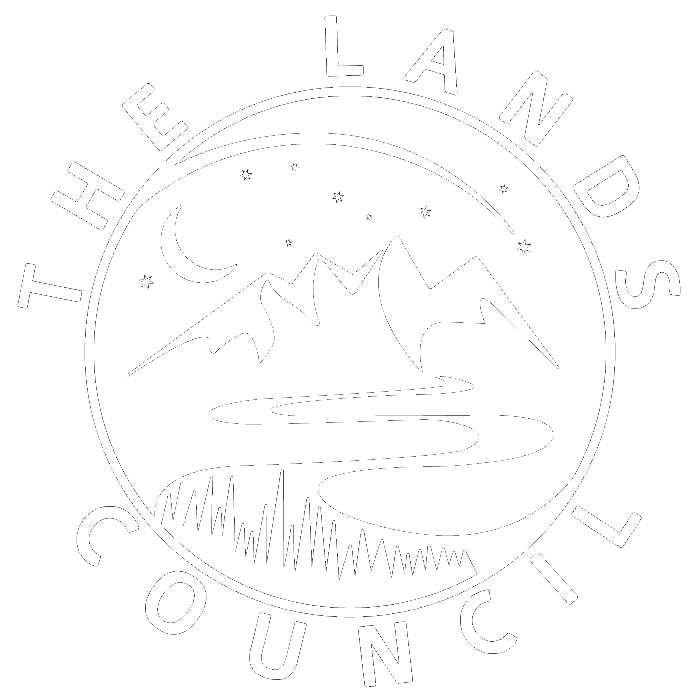By Lindsay Box
On Wednesday, November 17th, The Lands Council staff joined Resource Synergy, Sustainable Northwest, the Kalispel Tribe of Indians, the Northeast Washington Forestry Coalition, WSU Forestry Extension, and more for a biochar burn on the Kalispel Reservation.
That morning, we arrived in the bitter cold near the Pend Oreille River and we quickly got to work (fire = warmth, my friends). We all got started on the first brush pile and Adam gave us instructions on how to load the wood. Those who were skilled and able started operating the chainsaws and loading up the first Oregon kiln. Each Oregon kiln (we have 2 and the Kalispel Tribe has 1) makes about 1 cubic yard of biochar in about 4 hours. And in no time - we had fire and our frozen hands rejoiced! This isn’t just any fire - biochar is created during a process called pyrolysis, which is a heat-driven reaction (350-700°C) where carbon containing biomass is broken down into various components. The pyrolysis reaction requires very little oxygen, so therefore, the material does not combust and emissions are contained.*
Groups moved to kiln after kiln, loading each up with wood from slash piles. After all three Oregon kilns were going, we set up the polygon of fire kiln - the big one! - around a large brush pile. A polygon fire kiln is made up of large slats of metal that join together and it can burn a much larger pile, much faster than an Oregon kiln. Within 7 minutes of igniting brush in the polygon of fire kiln, it was reduced by half. After each kiln is full and the flame has gone out, we quenched each with water. Presto, we have biochar!
The process of producing biochar is fascinating - you take forest, agricultural, or commercial waste that fuels wildfires and turn it into a product that sequesters carbon, improves plant health, and retains water. It is predicted that at least 50% of the carbon in any piece of waste turned into biochar becomes stable, locking away that carbon into the soil for a period of several to hundreds of years, offsetting its contribution as a greenhouse gas in the form of carbon dioxide.*
In addition, the people who are involved in the process are pretty cool too. We worked with Resource Synergy, a local company that works with businesses to reduce waste and maximize energy and water efficiency. They want to produce biochar on a large scale and sell it with compost. Members and representatives from the Kalispel Tribe of Indians helped with the burn too - learning how they can use biochar to mitigate forest fires and add as a soil amendment. Multiple members of the Northeast Washington Forestry Coalition (NEWFC) were joined in as well. They work to promote forest restoration and wildlands protection while contributing to a local, thriving economy within our communities. NEWFC board member, Gloria Flora, was on site. Ms. Flora is the Executive Director of Sustainable Obtainable Solutions, a non-profit founded to ensure the sustainability of public lands and the communities that depend on them - AND she’s the founder and former director of the U.S. Biochar Initiative.
We were also joined by Andrew Perleberg, a professor from the WSU Extension Forestry - which sparked an interesting conversation. I spoke with Mr. Perleberg on how biochar could positively affect the town of Leavenworth, and many areas in Washington. Leavenworth is in a valley, has a large agricultural industry focus, and is plagued by wildfires each year. Because it is in the apple-maggot quarantine area, residents and farmers are not allowed to dispose of their agricultural waste outside of the region. So this waste stays in the region and is either burned on site or it becomes fuel for forest fires. Each year, the region is hugely affected by wildfires, which also impacts one of the region’s largest industries: wine. The Columbia Valley area produces 99% of the wine grapes grown in Washington State and many wineries are dealing with how smoke affects their product. Washington is the second-largest wine producing state in the US, with over 1,000 wineries making over 17M cases of wine, contributing more than $8 billion in annual in-state economic impact. Mr. Perleberg proposed that biochar might be a full-circle solution to this problem: farmers can use their agricultural waste to make biochar, which would decrease the amount of slash piles in the region while super-charging the soil and its crops, all while following apple maggot quarantine regulations.
As you can tell, this was my first biochar burn and I learned A LOT. But I was also genuinely impressed by the amount of people who were coming together to find climate solutions, specifically for our region. And this is just the beginning. Take a look below for way too many photos and a video.
Considering I am not an expert, if you have any questions, please reach out to Adam Gebauer at agebauer@landscouncil.org.



















































